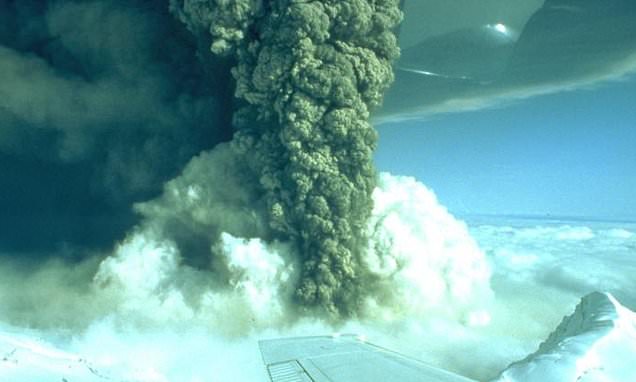Magnitude 4.6 Earthquake Strikes Near Alaska’s Mount Spurr Amid Ongoing Volcanic Unrest

A magnitude 4.6 earthquake struck near Mount Spurr, an Alaskan volcano currently under advisory for potential eruption, raising renewed concerns about volcanic activity in the region.
The U.S. Geological Survey (USGS) reported that the earthquake occurred near Petersville, approximately 86 miles from Mount Spurr and 34 miles north of Skwentna. The Alaska Earthquake Center confirmed the event, stating it occurred at 10:38 a.m. local time at a depth of 52.4 miles.
The earthquake was widely felt across Anchorage and the Matanuska-Susitna Valley despite Anchorage being more than 100 miles from the epicenter. The USGS has received close to 200 reports of ground shaking from residents across the sparsely populated region.
Mount Spurr, a stratovolcano located 80 miles west of Anchorage, remains under an “Advisory” status issued by the Alaska Volcano Observatory (AVO) due to low-level unrest. Seismic monitors have recorded occasional small earthquakes beneath the volcano over recent months. In March, the volcano was briefly elevated to “Watch” status when scientists observed heightened gas emissions and increased seismicity.
The recent earthquake has reignited concerns due to its proximity to Mount Spurr. A 2021 study published in Nature concluded that moderate to strong earthquakes near volcanoes showing signs of unrest could act as eruption triggers particularly when magma pressure and underground gas buildup are already elevated.
According to AVO’s latest bulletin, satellite imagery has shown no visible volcanic ash emissions. Webcam views of Mount Spurr’s summit crater only indicated minor vapor plumes. The agency emphasized that while fluctuations in seismic activity are typical, the potential for an eruption remains present but currently deemed unlikely.
Matt Haney, scientist-in-charge at the AVO, previously noted that if Mount Spurr erupts, it would likely be from Crater Peak a vent responsible for the last eruption in 1992. That event produced ash plumes reaching up to 50,000 feet and deposited volcanic debris across surrounding areas.
Haney warned that any future eruption could generate similarly powerful explosions lasting several hours, with ash clouds threatening air traffic and blanketing nearby regions including Anchorage. Additionally, fast-moving pyroclastic flows and mudslides could descend the volcano at speeds exceeding 200 miles per hour. Fortunately, the area surrounding Mount Spurr remains uninhabited.
The Broad Pass thrust fault system, a southeast-verging fault zone near Petersville, is considered active and capable of producing earthquakes in the magnitude 7.6 to 7.8 range. Wednesday’s event, while moderate, underscores the seismic volatility of south-central Alaska.
Public responses to the earthquake were swift. Residents from Anchorage’s Airport Heights and Sand Lake neighborhoods reported light to moderate shaking. Others noted similar tremors as far north as Healy.
Anchorage, with a population nearing 300,000, remains vigilant. The city has a long history of seismic awareness and emergency preparedness, especially due to its proximity to several active fault lines and volcanoes.
As of now, AVO and USGS continue to monitor both seismic and volcanic signals from Mount Spurr. Authorities advise residents and pilots to remain updated through official bulletins and emergency alerts.
The situation highlights Alaska’s complex interplay of tectonic and volcanic hazards and reinforces the importance of ongoing scientific monitoring to mitigate risk in the region’s geologically active zones.
Read More: LAD REPORTING




